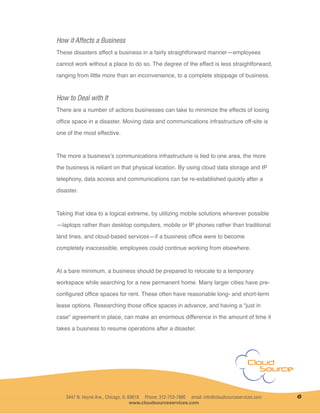Business continuity planning involves developing procedures and preventative measures to ensure a business can resume operations smoothly after a disruption. The document outlines key aspects of developing an effective plan, including identifying potential disasters, investing time in initial planning and ongoing maintenance, and training employees. It also recommends mitigation strategies like using cloud services and mobile solutions to separate critical functions from physical locations and facilitate reestablishing operations remotely if needed.











